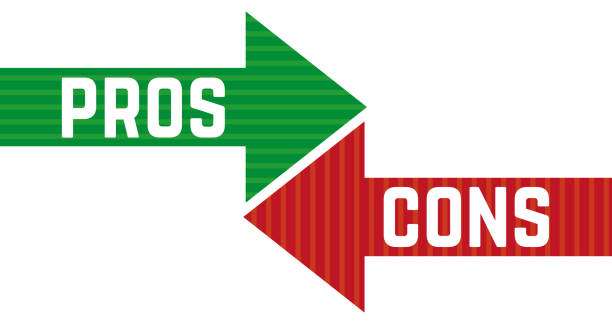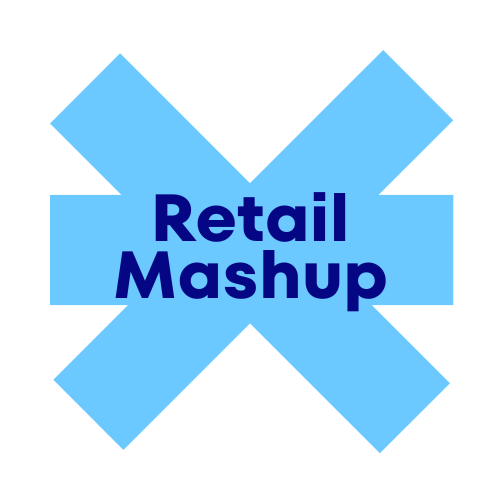Retail marketing encompasses retailers’ strategies and tactics to attract customers, drive sales, and build brand loyalty. It involves a range of activities, from traditional advertising and promotions to digital marketing and customer engagement strategies. This is part 5 of the series on using artificial intelligence focusing on retail marketing.
Table of Contents
What Is Retail Marketing?
Retail marketing is what a business performs to attract customers and empower them to buy its products or services. It is about setting the optimal expectations and creating positive experiences that convince would-be or existing customers to choose its brands over the competition. Retail marketing can be physical (e.g., brochures, weekly flyers, catalogs, billboards, etc.), digital (e.g., emails, social media, websites, ad banners, SMS, etc.), or virtual (e.g., in-game avatars, virtual brand ambassadors, etc.)
Regardless of the format chosen (physical, digital, virtual, or a combination of all three), there are some key concepts brands should consider before building or executing a retail marketing strategy:
- Understanding your customers: What do they need and want? How do they shop?
- Developing a strong brand identity: What makes your store unique?
- Creating a great product assortment: Having the right products in stock that people are looking for
- Pricing your products competitively: Setting prices that are fair to both you and your customers
- Promoting your products and services: Getting the word out about what you have to offer
- Providing excellent customer service: Making sure your customers have a positive experience shopping at your store
- Building customer loyalty: Encouraging customers to come back for more
- Building metrics: Determining and monitoring the metrics for success
Evolution of Technology in Retail Marketing
The use of technology in retail marketing has evolved significantly over the years. In the past, retailers relied primarily on traditional forms of advertising, such as print ads, TV commercials, and direct mail, to reach their target audience. However, with the advent of the internet and digital technologies, the landscape of retail marketing has changed dramatically.
Today, retailers have access to a wide range of digital tools and platforms that allow them to target their audience more effectively and measure the impact of their marketing campaigns in real-time. One of the most significant developments in recent years has been the use of artificial intelligence.
Use of AI to Enhance Retail Marketing Engagement and Customer Experience
AI is increasingly being used by retailers to enhance marketing engagement and improve the customer experience. AI-powered tools can analyze vast amounts of data to gain insights into customer behavior and preferences, allowing retailers to create more targeted and personalized marketing campaigns.

For example, AI can be used to analyze customer data from online and offline sources to identify patterns and trends. Retailers can then use this information to tailor their marketing messages to individual customers, increasing the likelihood of conversion.
Examples of Brands Using AI to Perfect its Retail Marketing Efforts
- L’Oreal: L’Oreal uses AI-powered chatbots to provide personalized beauty advice to customers. The chatbots analyze customer data and preferences to offer tailored product recommendations and beauty tips, enhancing the customer experience and driving sales.
- Walmart: Walmart uses AI for various marketing purposes, including dynamic pricing, personalized recommendations, and supply chain optimization. The company’s AI-powered algorithms analyze customer data to offer personalized promotions and improve overall efficiency.
- Best Buy: Best Buy uses AI to personalize the shopping experience for its customers. The company’s AI-powered chatbot helps customers find products, provides recommendations, and answers questions, leading to increased customer satisfaction and loyalty.
- Coca-Cola: Coca-Cola uses AI to create personalized marketing campaigns. The company’s AI algorithms analyze customer data and preferences to deliver targeted advertising and promotions, resulting in higher engagement and brand loyalty.
- Starbucks: Starbucks uses AI for personalized marketing and customer engagement. The company’s mobile app uses AI to analyze customer data and offer personalized recommendations and rewards, driving customer loyalty and increasing sales.
Pros and Cons of Using AI for Retail Marketing
Before heading straight to using AI for their marketing efforts, brands should consider the following pros and cons.
Pros:

- Personalization: AI can help retailers create more personalized marketing campaigns, which can lead to higher engagement and conversion rates (see below for a separate article on personalization)
- Efficiency: AI can automate many marketing tasks, such as data analysis and campaign optimization, saving retailers time and resources.
- Improved Customer Experience: AI-powered tools, such as chatbots, can provide customers with instant support and assistance, enhancing their overall shopping experience.
- Data-driven Insights: AI can analyze vast amounts of data to provide retailers with valuable insights into customer behavior and market trends, helping them make more informed marketing decisions.
Cons:
- Cost: Implementing AI can be expensive, especially for smaller retailers with limited budgets.
- Complexity: AI technology can be complex and require specialized skills to implement and manage effectively.
- Privacy Concerns: The use of AI in marketing raises privacy concerns, as it involves collecting and analyzing customer data.
- Dependency: Retailers may become overly reliant on AI for marketing decisions, potentially limiting creativity and innovation.
Most consumers say that misinformation, toxic user bases, fake accounts and bots have degraded the social media experience, and more than 70% expect GenAI to negatively impact social media.
When AI Goes Wrong
A Scottish children’s event called “Willy’s Chocolate Experience” became an internet sensation, but for all the wrong reasons. Advertised with dreamlike images of a candy wonderland, the reality fell far short, sparking outrage from attendees and international media attention.
Held at Box Hub Glasgow, the experience promised a land of vibrant colors, delicious treats, and whimsical oompa loompas. However, ticket holders arrived to find a nearly bare warehouse decorated with a few basic props. Disappointed and frustrated, many demanded immediate refunds. Tickets reportedly cost around £35, according to The Guardian, but the event’s website has mysteriously vanished.
House of Illuminati, the company behind the fiasco, promised full refunds to all ticket holders.

Building trust will continue to be the number one topic brands should continue as it uses AI to generate content. Quality control should be in place to ensure that copies are reviewed before they go live.
How To Use Feedback and AI to Generate Content?
Often under-utilized, feedback can be a great source of data for retailers to use for generating content with the help of AI. Here are some strategies that could be deployed by retailers.
- Sentiment Analysis: AI can analyze customer feedback, such as reviews and social media comments, to understand the sentiment behind them. Retailers can use this information to create marketing content that resonates with their audience’s emotions and addresses any concerns or issues raised in the feedback.
- Content Personalization: AI can analyze customer data to create personalized marketing content. For example, retailers can use AI to recommend products based on a customer’s purchase history or browsing behavior, creating a more tailored shopping experience.
- Predictive Analytics: AI can analyze past feedback and customer behavior to predict future trends and preferences. Retailers can use this information to create marketing content that anticipates customer needs and desires.
- Optimized Messaging: AI can analyze customer feedback to identify keywords and phrases that resonate with their audience. Retailers can use this information to optimize their marketing messaging for maximum impact.
- Automated Content Creation: AI can generate marketing content, such as product descriptions or social media posts, based on customer feedback and preferences. This can help retailers create a consistent stream of content without the need for manual intervention.
By leveraging feedback and AI, retailers can create more relevant and engaging marketing content that resonates with their audience, ultimately driving sales and building brand loyalty.
What Are The Best Metrics To Evaluate Use of AI in Marketing?
Measuring the effectiveness of AI in retail marketing requires a combination of metrics that reflect the impact on both marketing performance and business outcomes. Here are some key metrics to consider:
- Conversion Rate: Measure the percentage of website visitors or app users who complete a desired action, such as making a purchase or signing up for a newsletter, as a result of AI-driven marketing efforts.
- Customer Engagement: Track metrics such as click-through rates, time spent on site, and social media interactions to gauge how effectively AI-driven marketing campaigns are engaging customers.
- ROI (Return on Investment): Calculate the return on investment for AI-driven marketing campaigns by comparing the cost of the campaign to the revenue generated. This can help determine the overall effectiveness of AI technology in driving sales and revenue.
- Customer Satisfaction: Use customer surveys and feedback to measure satisfaction levels with AI-powered features, such as chatbots or personalized recommendations. High satisfaction scores indicate that AI is effectively enhancing the customer experience.
- Customer Lifetime Value (CLV): Analyze how AI-driven marketing campaigns impact CLV by increasing repeat purchases, upselling, or cross-selling. A higher CLV indicates that AI is successfully driving long-term customer value.
- Retention Rate: Measure the percentage of customers who continue to engage with your brand over time. AI-driven marketing efforts should contribute to higher retention rates by delivering personalized experiences that keep customers coming back.
- Cost Savings: Evaluate the cost savings achieved through AI automation compared to manual marketing efforts. This can include savings in time, resources, and operational costs.
- Predictive Performance: Assess the accuracy of AI algorithms in predicting customer behavior and trends. Higher predictive performance indicates that AI is effectively leveraging data to drive marketing decisions.
By monitoring these metrics, retailers can gain valuable insights into the effectiveness of AI in their marketing efforts and make data-driven decisions to optimize performance and drive business growth.
Looking Ahead
Looking ahead, applying AI in marketing can be a strategic process that involves several key steps. Here is a general roadmap for retail brands looking to implement AI in their marketing efforts:
- Identify Goals and Objectives: Define clear goals and objectives for using AI in marketing. Whether improving customer engagement, increasing sales, or optimizing marketing campaigns, having specific goals will guide your AI strategy.
- Assess Data Availability and Quality: Evaluate the availability and quality of your data. AI relies on data to generate insights and make predictions, so it’s essential to have access to relevant and reliable data sources.
- Choose the Right AI Tools and Technologies: Select AI tools and technologies that align with your goals and data capabilities. This could include chatbots for customer service, predictive analytics for personalized marketing, or image recognition for visual search.
- Integrate AI into Marketing Channels: Integrate AI into your existing marketing channels and platforms. This could involve implementing AI-powered features on your website, using AI for targeted advertising, or incorporating AI into your email marketing campaigns.
- Test and Iterate: Test your AI-driven marketing campaigns to see how they perform and iterate based on the results. Use A/B testing and other methods to refine your approach and improve effectiveness over time.
- Monitor Performance and Analytics: Continuously monitor the performance of your AI-driven marketing efforts using relevant metrics and analytics. This will help you track progress toward your goals and identify areas for improvement.
- Stay Updated with AI Trends: Keep abreast of the latest trends and developments in AI technology and marketing. AI is a rapidly evolving field, and staying informed will help you make informed decisions and stay ahead of the competition.
- Ensure Compliance and Ethical Use: Ensure that your use of AI in marketing complies with relevant laws and regulations, such as data protection and privacy laws. It’s also important to use AI ethically and responsibly to maintain customer trust.
By following these steps, retailers can effectively apply AI in their marketing efforts to drive engagement, increase sales, and enhance the overall customer experience.
Follow this link for more information about the Retail Mashup content platform
Follow this link for more insights
Follow this link for more podcast episodes
Follow this link to participate in regular polls








